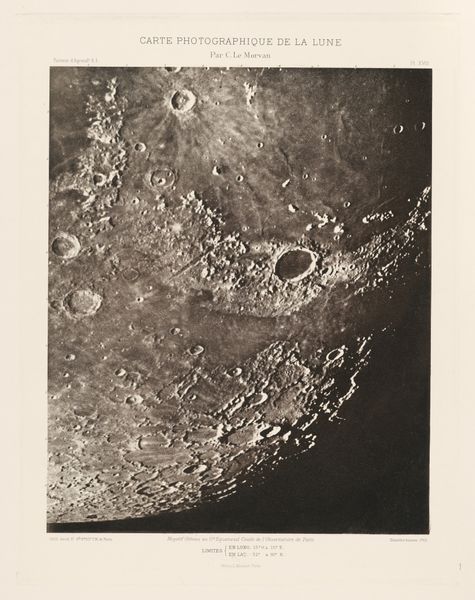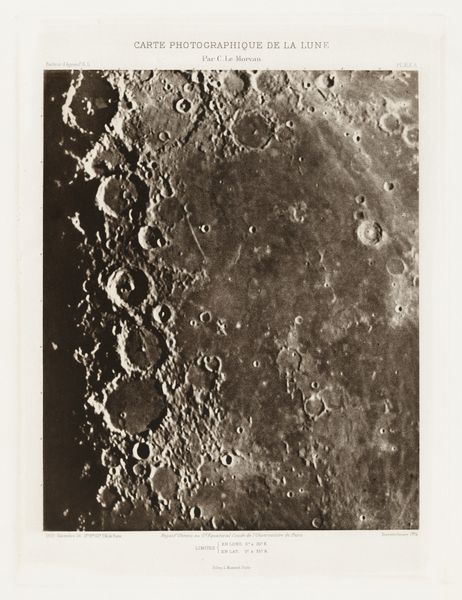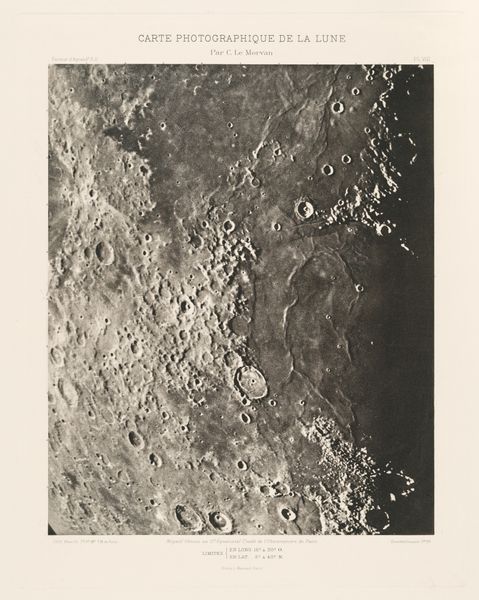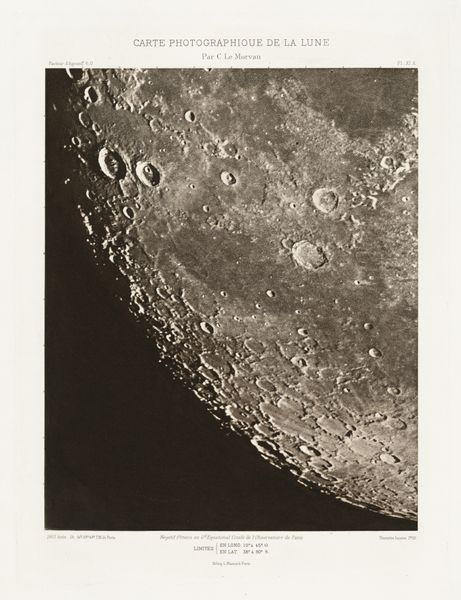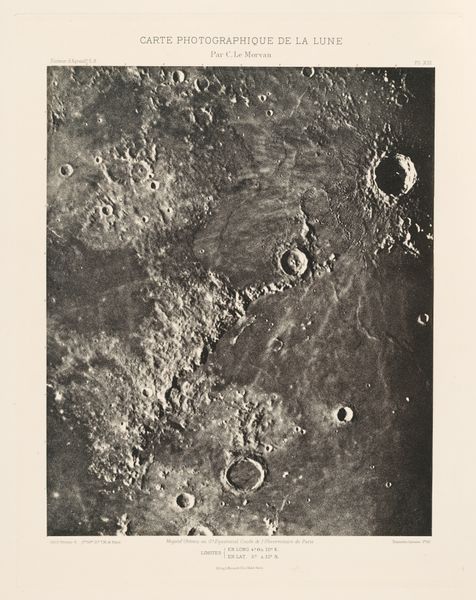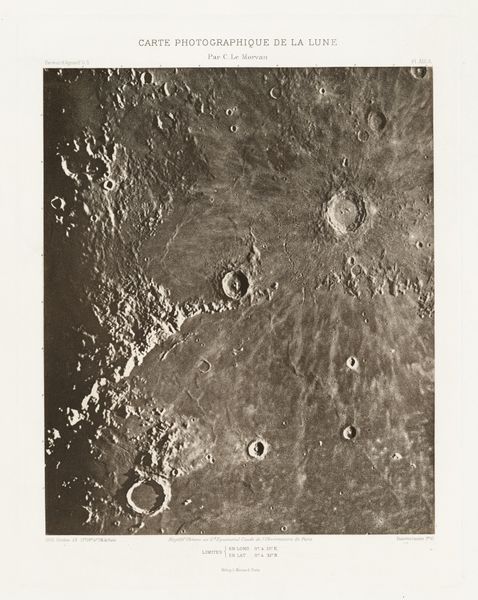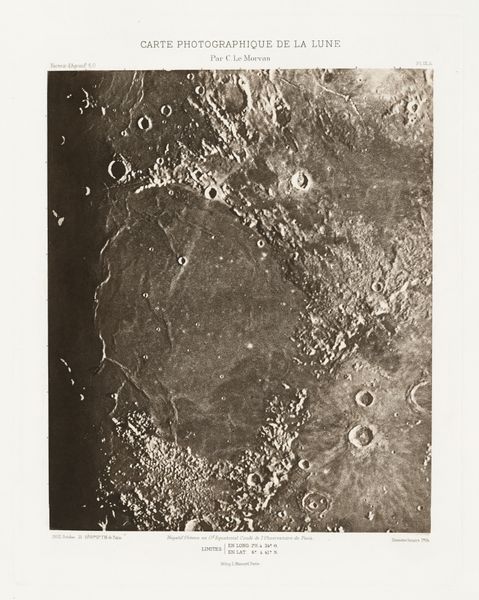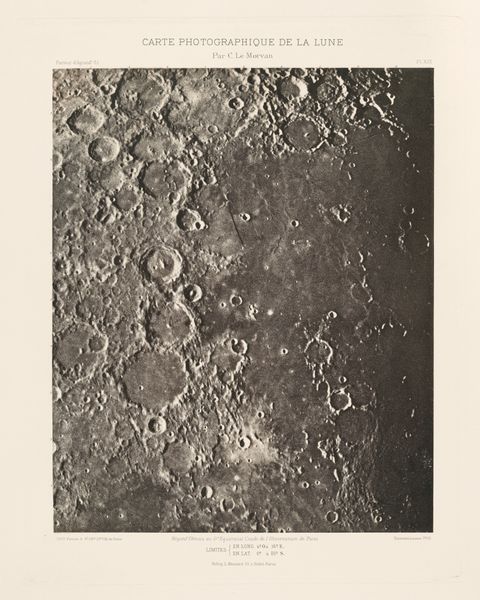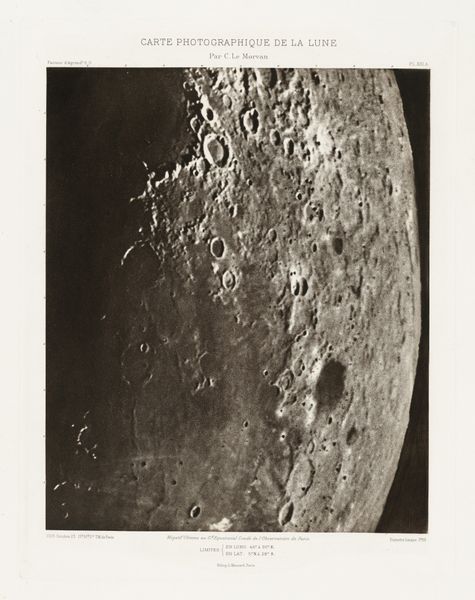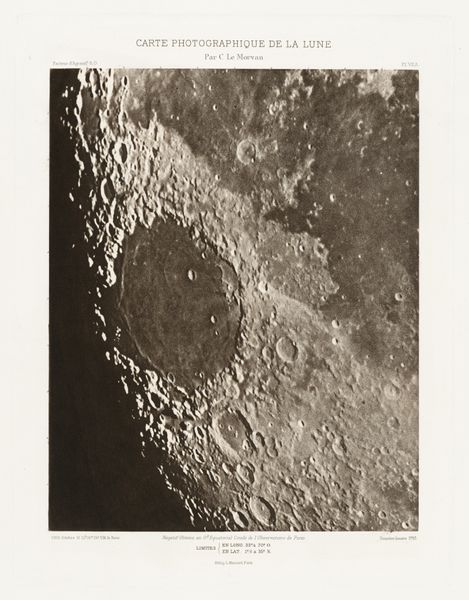
Carte photographique de la lune, planche X.A (Photographic Chart of the Moon, plate X.A) Possibly 1906 - 1914
0:00
0:00
print, photography
# print
#
landscape
#
photography
#
geometric
#
orientalism
Dimensions: image: 31.1 × 25.5 cm (12 1/4 × 10 1/16 in.) plate: 39 × 29.5 cm (15 3/8 × 11 5/8 in.) sheet: 48.9 × 40 cm (19 1/4 × 15 3/4 in.)
Copyright: National Gallery of Art: CC0 1.0
Editor: So, this is "Carte photographique de la lune, planche X.A," or "Photographic Chart of the Moon, plate X.A" by Charles Le Morvan, dating possibly between 1906 and 1914. It's a print of a photograph, and honestly, it's just stunning in its starkness. It makes me think about exploration and discovery. How do you interpret this work in the context of its time? Curator: Well, think about the sociopolitical context: this was during a time of intense colonial expansion and scientific fervor. Photography like this wasn't just about capturing an image; it was about claiming knowledge, mapping the unknown. Consider the power dynamics embedded in "charting" the moon. Who gets to name, define, and ultimately "own" this space, even if symbolically? Editor: That's a perspective I hadn't fully considered. The idea of claiming ownership over celestial bodies. I was thinking more about the romance of scientific pursuit. Curator: And that romance is part of it, absolutely. But that romance often masked the colonial impulse to categorize and control. Who had access to the technology and resources to create these images, and whose narratives were therefore centered? Le Morvan's work fits into a larger historical trend where scientific advancement was often intertwined with domination. This photograph normalizes and reinforces such views. Editor: So, looking at it now, it isn't just a picture of the moon, it’s also a document of its time. Thanks, that’s given me a lot to think about concerning its historical and political implications. Curator: Precisely. Art isn't created in a vacuum; it reflects and shapes the societal landscape. It encourages us to critically examine whose voices are amplified and whose are silenced within that landscape.
Comments
No comments
Be the first to comment and join the conversation on the ultimate creative platform.
